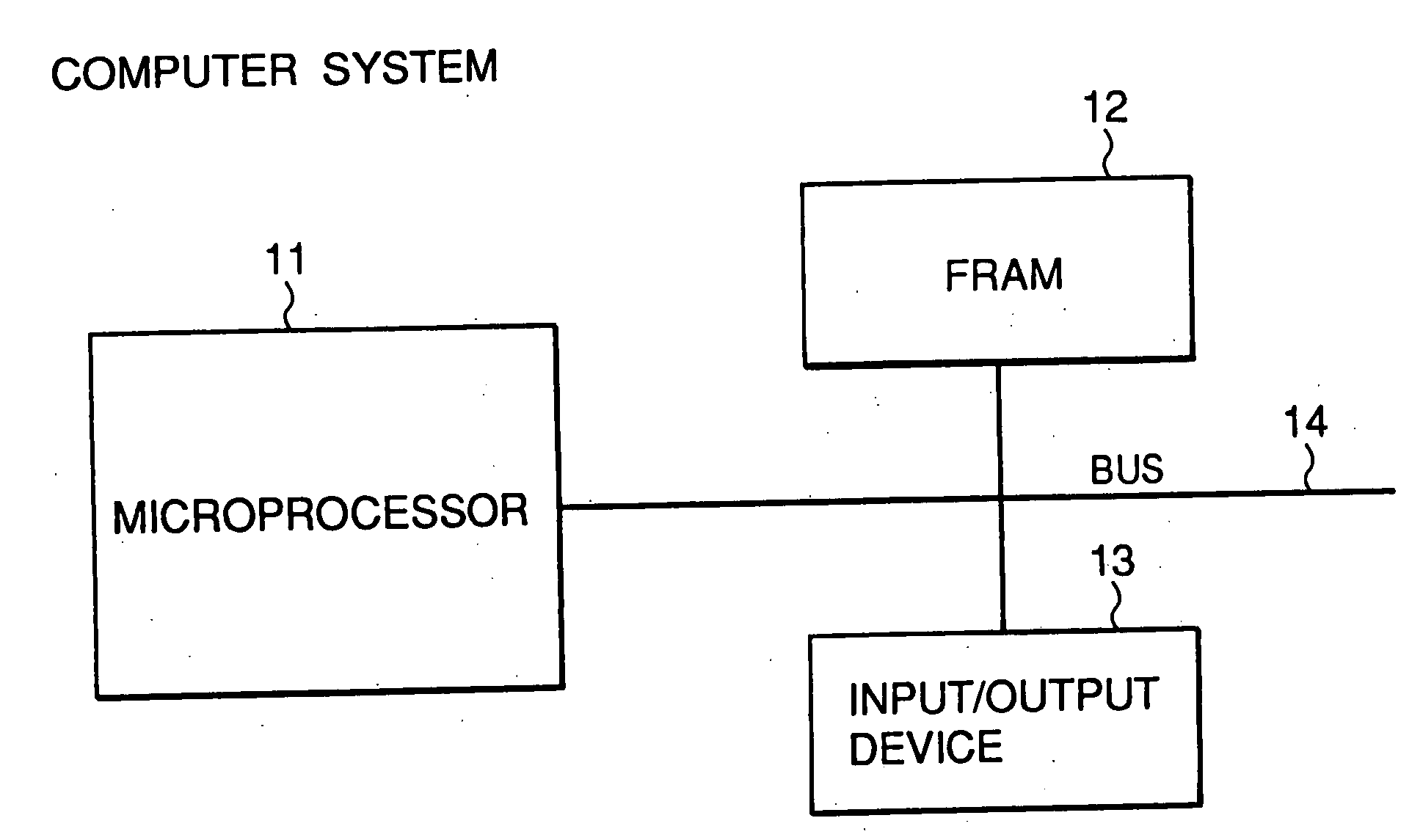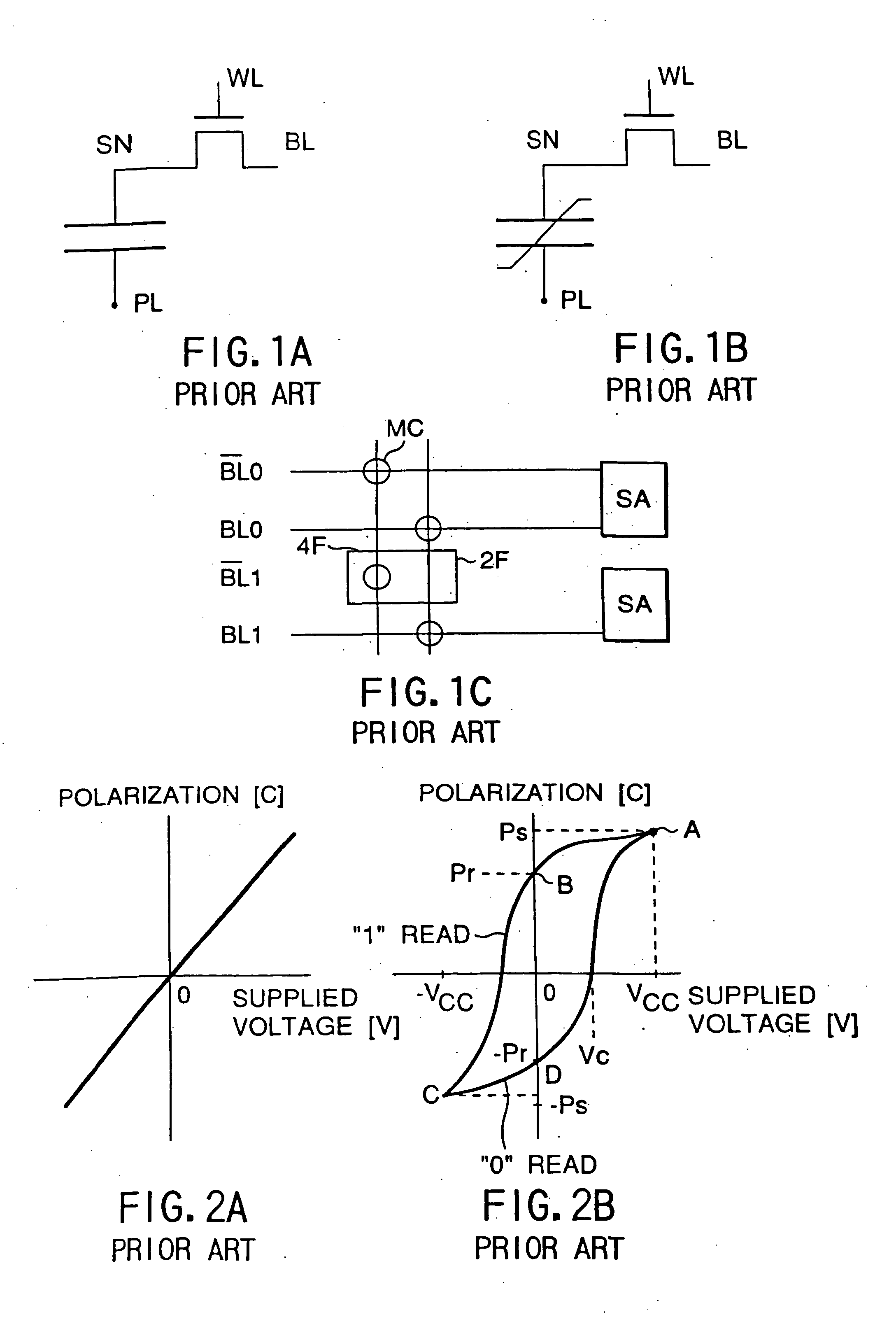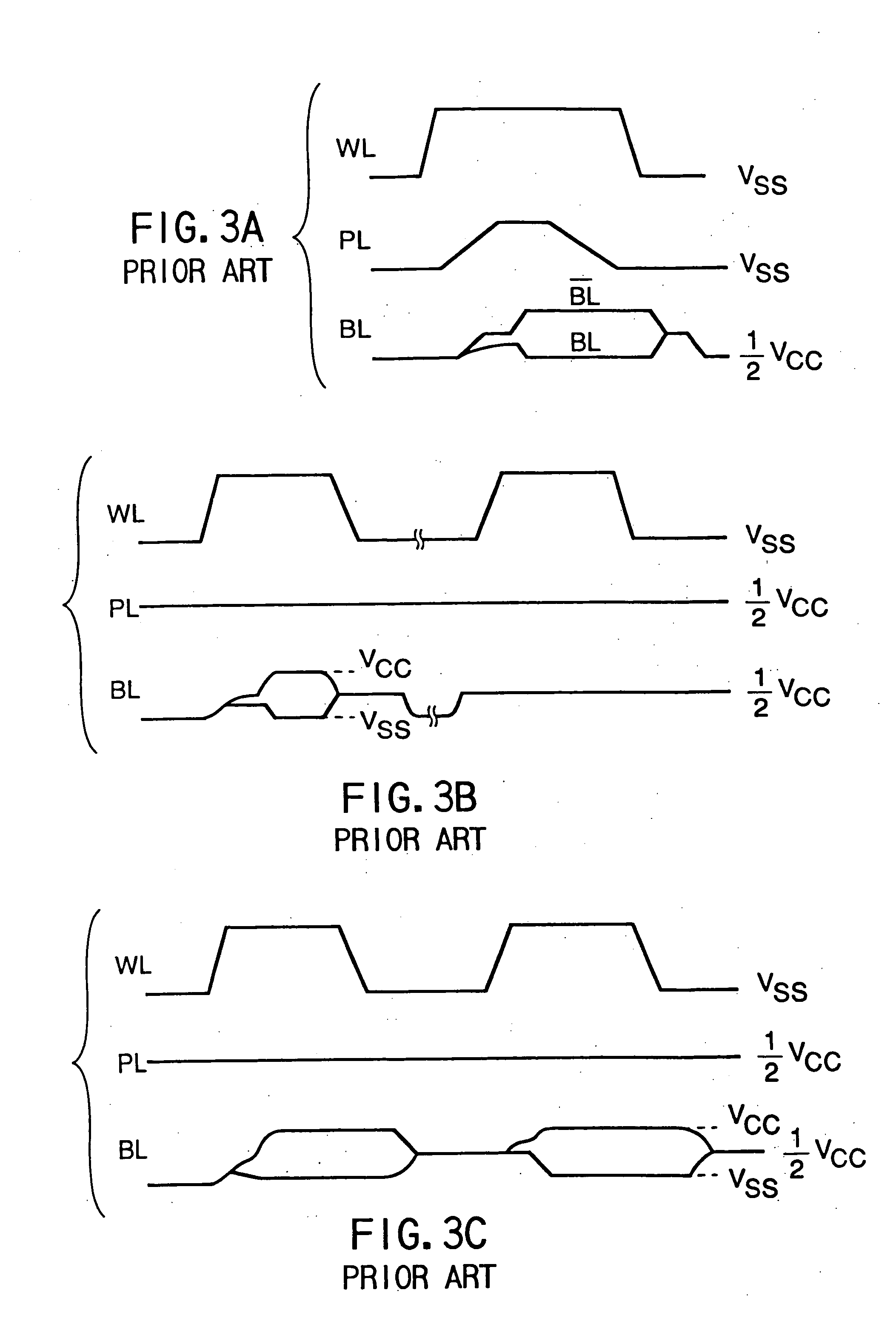Semiconductor memory device and various systems mounting them
a memory device and semiconductor technology, applied in semiconductor devices, digital storage, instruments, etc., can solve the problems of long read/write access time, electrode operation with a large load capacity, polarization characteristics have a hysteresis,
- Summary
- Abstract
- Description
- Claims
- Application Information
AI Technical Summary
Benefits of technology
Problems solved by technology
Method used
Image
Examples
first embodiment
(First Embodiment)
FIG. 5 is a block diagram showing the basic structure of a computer system according to the first embodiment of the present invention;
This system is constituted by a microprocessor 11 for performing various arithmetic processing operations, a nonvolatile semiconductor memory device 12 connected to the microprocessor 11 through a bus 14 to store data, and an input / output device 13 connected to the microprocessor 11 through the bus 14 to transmit / receive data to / from an external device.
In this embodiment, the semiconductor memory device (FRAM) of the present invention is mounted in the computer system. The FRAM used in this embodiment will be described below in detail.
FIG. 6A and FIG. 6B are circuit diagrams showing the basic structure of the FRAM used in this embodiment.
FIG. 6A and FIG. 6B show an equivalent circuit corresponding to eight memory cells. Referring to FIG. 6A, reference symbol BL denotes a bit line; PL, a plate electrode; WLij, a word line; and S...
second embodiment
(Second Embodiment)
FIG. 9 is a block diagram showing the basic structure of a computer system according to the second embodiment. The same reference numerals as in FIG. 5 denote the same parts in FIG. 9, and a detailed description thereof will be omitted.
In this embodiment, a controller 15 for controlling an FRAM 12 is added to the structure shown in FIG. 5. More specifically, the FRAM 12 is connected to a bus 14 through the controller 15.
In this structure as well, the same effects as in the first embodiment can be obtained. The controller 15 of this embodiment allows to omit a refresh control signal generation circuit, so that the cost can be reduced.
third embodiment
(Third Embodiment)
FIG. 10 is a block diagram showing the basic structure of a computer system according to the third embodiment. The same reference numerals as in FIG. 9 denote the same parts in FIG. 10, and a detailed description thereof will be omitted.
This embodiment is different from the second embodiment in that the I / O of an FRAM 12 is directly connected to a system bus 14. The system can be freely constituted.
In this structure as well, the same effects as in the first embodiment can be obtained. A controller 15 of this embodiment allows to omit a refresh control signal generation circuit, so that the cost can be reduced.
PUM
 Login to View More
Login to View More Abstract
Description
Claims
Application Information
 Login to View More
Login to View More - R&D
- Intellectual Property
- Life Sciences
- Materials
- Tech Scout
- Unparalleled Data Quality
- Higher Quality Content
- 60% Fewer Hallucinations
Browse by: Latest US Patents, China's latest patents, Technical Efficacy Thesaurus, Application Domain, Technology Topic, Popular Technical Reports.
© 2025 PatSnap. All rights reserved.Legal|Privacy policy|Modern Slavery Act Transparency Statement|Sitemap|About US| Contact US: help@patsnap.com



